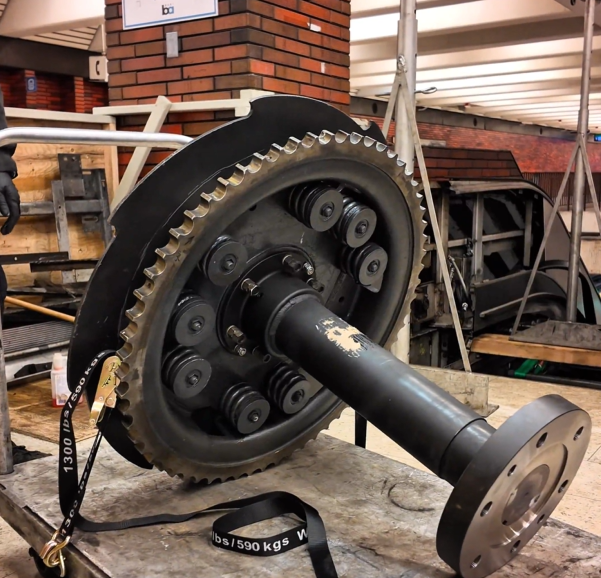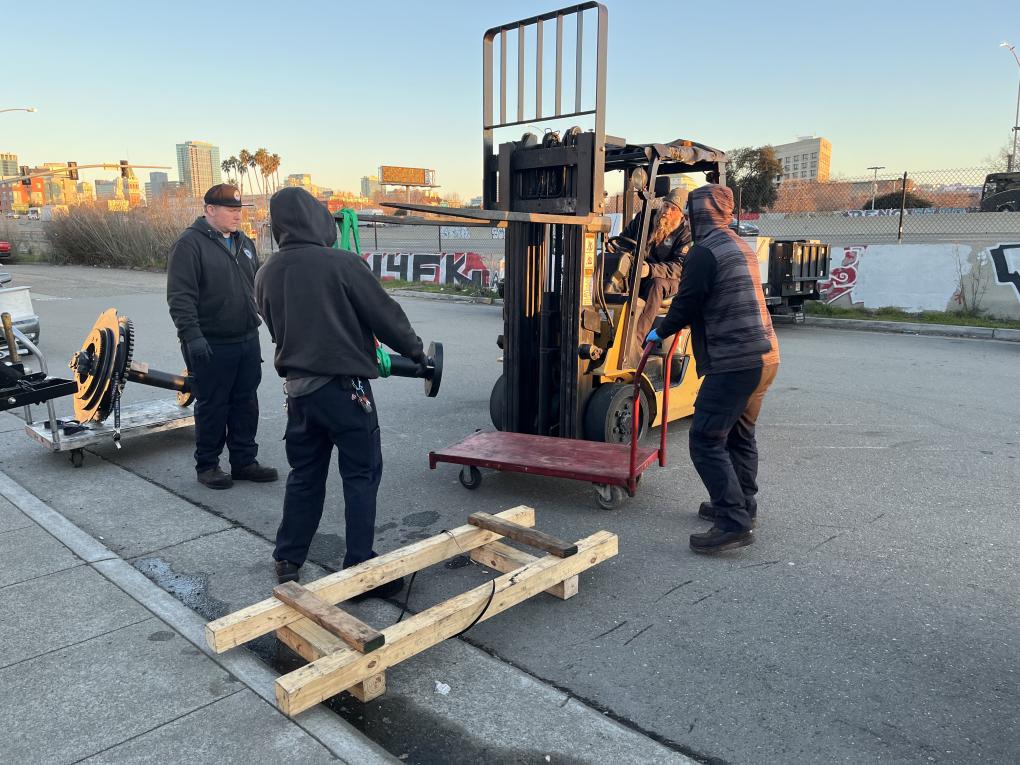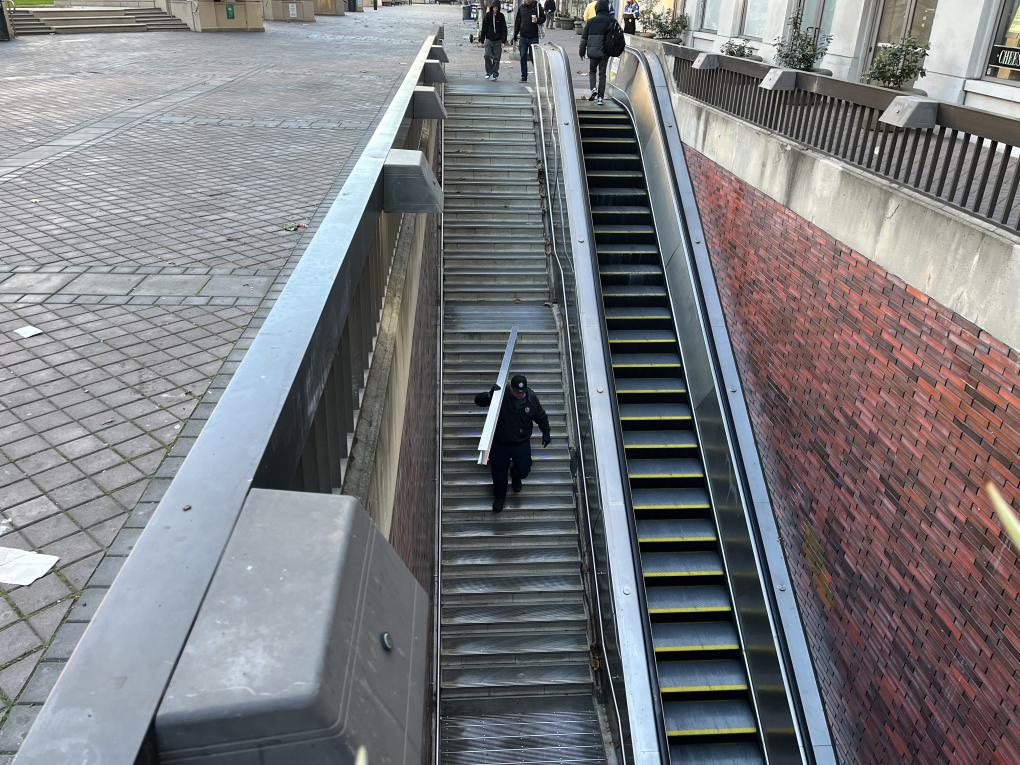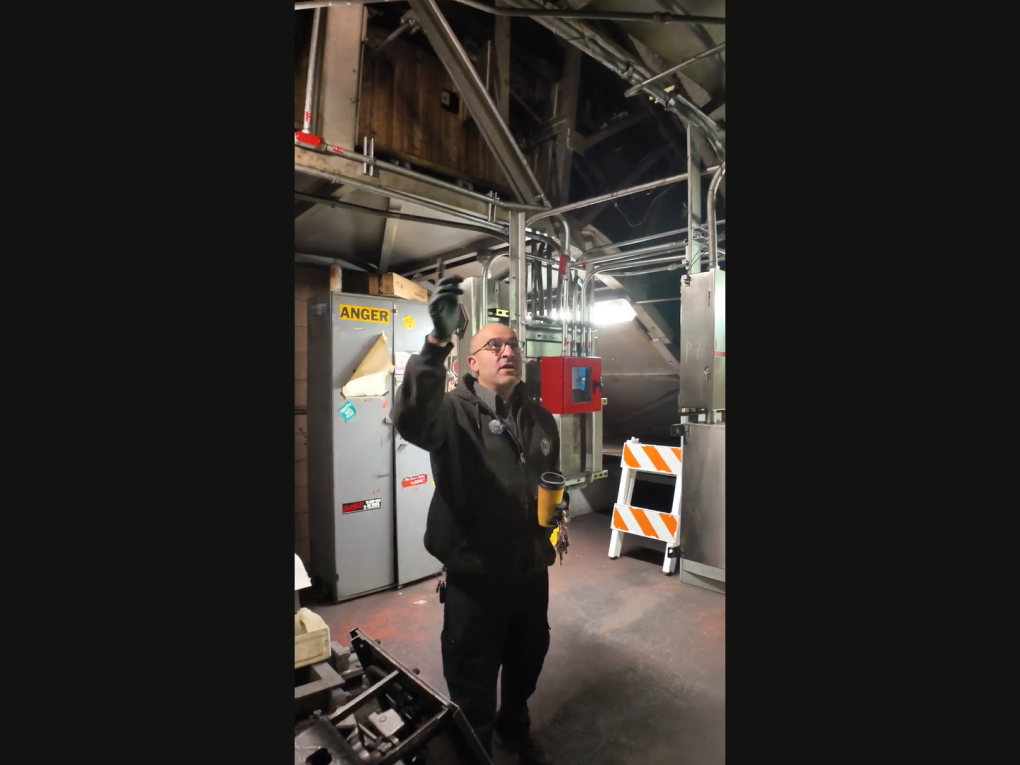This 1,200-pound gear makes escalators run. Fixing it is no simple task.

Half of the 1,200-pound bull gear ready for installation at 12th St. Oakland Station.
The sun has just risen in a wash of pink and purple over BART’s Oakland Shops, and four men dressed in blue are standing around a giant gear.
It looks like a bicycle gear with its interlocked steel circles rimmed with teeth. But this gear is big. Very big.
Known as a bull gear, this 1,200-pound steel beast can be found in all of BART’s 175 escalators. Like its namesake, its job is to pull heavy loads, in this case, moving the belt of an escalator used by thousands of BART passengers each day.
The bull gear in question belongs in an escalator that carries riders from the concourse at 12th St. Station to the platform. Many of the escalator’s components, including the bull gear, are nearly as old as the BART system.
Recently, the gear’s bearings were starting to wear, meaning the ride was not as smooth as it should be. So BART’s Elevator/Escalators Maintenance team sprung into action, taking the escalator out of service so the gear could be removed, renovated, and reinstalled in a matter of weeks. Like the gear, it was a big job.

Escalator techs Mehdi Nategh and Brian McMurtrie and escalator tech trainees Austin Eagleston and Luis Gonzalez separate the bull gear with a forklift and load it onto a cart at BART's Oakland Shops.
When this bull gear wore out, rather than ordering a new gear with a price tag in the tens of thousands, the maintenance team saw an opportunity to save money in BART’s operating budget by refurbishing it with new bearings and bolts. The renovated part should provide a smooth and safe ride for years to come.
“We are mitigating problems as they arise,” said Eric Stockton, Section Manager of Elevator/Escalator Maintenance. “Customer service is our number one focus at BART, and escalators play a big role in that.”
So how do you fix a bull gear? Unfortunately, you can’t tinker with it while it’s installed in an escalator. That means Eric’s team has to take the escalator apart, then use a chain fall (a gear system used to raise and lower loads) to lift the bull gear onto a flatbed cart.
These gears are too large to fit in BART’s elevators, so the gear must be wrenched in half with a forklift to split it into two, more manageable pieces. Then up the escalator into the light of day, onto the back of a truck, and off to the parts repair shop for a makeover.
On this particular morning at the Oakland Shops, the four men standing over the refurbished 12th St. Bull gear were tasked with getting it back into its escalator home. That meant, repeating all the steps above but in reverse.
By 8am, the men were off to 12th St., one truck carrying the cloven gear, another carrying their tools. You can watch some of the reinstallation process in the above video.
It took about a month to get the bull gear in place and the parts attached to get the escalator back in service. It’s worth the hard work, said Mehdi Nategh, the team lead who’s been working on escalators for almost thirty years.
“These bull gears can last more than twenty years,” he said.

Carrying parts into the station.
While escalator tech Brian McMurtrie and escalator tech trainees Austin Eagleston and Luis Gonzalez prepped the gear from the top, Nategh went down in the machine room directly beneath the escalator. Here, the inner workings of an escalator come to light. As the escalator moves above, you can see the drive chain turning in an endless loop, powered by a drive machine with a gearbox and 480-volt AC motor.
Being down there changes your perspective. When you step onto an escalator, you probably don’t stop to think about how it runs or the little mechanical world beneath it.
Once the bull gear is in place there is much more work to be done.
“We have to hook up the handrails, put the steps backs in, I'm sure there are some sensors we need to replace,” said Gonzalez.
A few weeks later, once the work was complete, a joy ride of the escalator demonstrated the work paid off. The ride was smooth and quiet as the refreshed bull gear pulled us along.

Mehdi Nategh in the machine room.